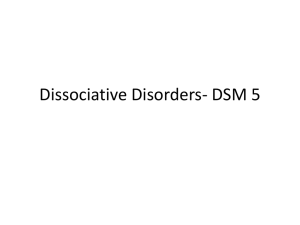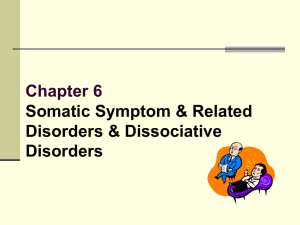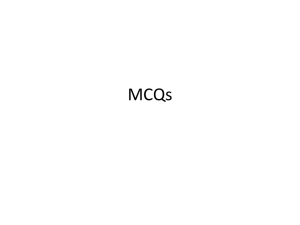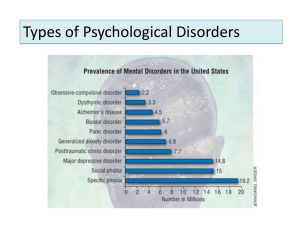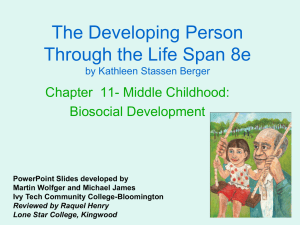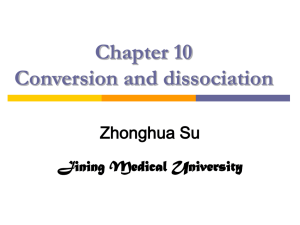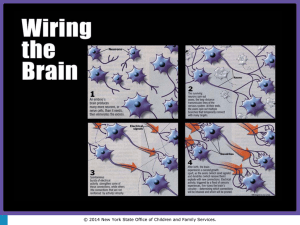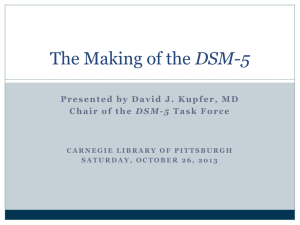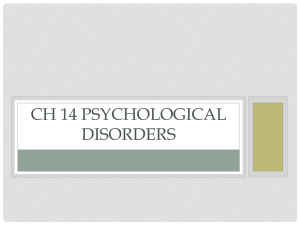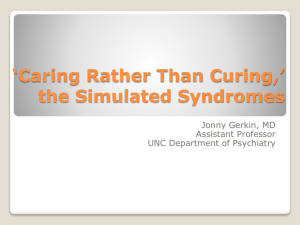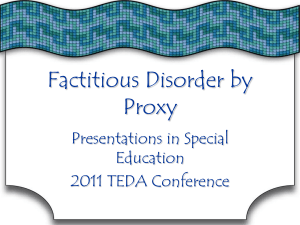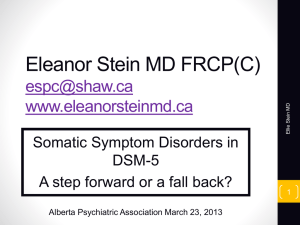extras - IPFW.edu
advertisement
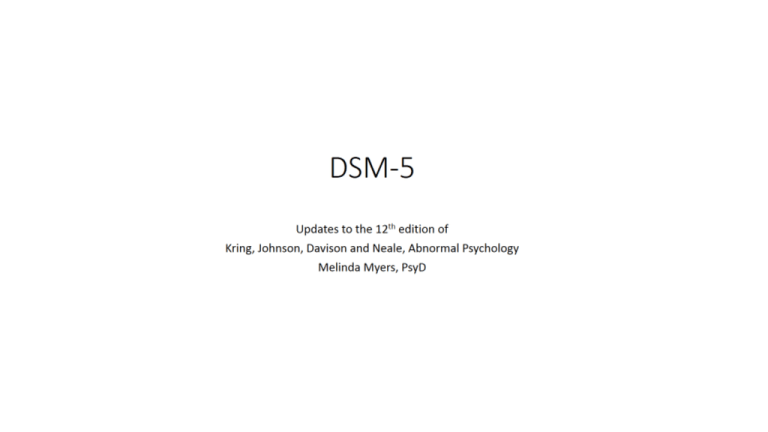
Chapter 8: Dissociative Disorders and Somatic-Symptom-Related Disorders • Criteria for Dissociative Amnesia clarified • Name change and criteria updated for Depersonalization/Derealization Disorder • Criteria for Dissociative Identity Disorder clarified • Somatic Symptom-Related Disorders updated and renamed • Conversion Disorder name retained, criteria clarified • New diagnosis: Somatic Symptom Disorder; name change and criteria clarified • Factitious Disorder criteria clarified and updated. Dissociative Amnesia • Criteria for Dissociative Amnesia clarified • Inability to remember important personal information, usually of a traumatic or stressful nature, that is too extensive to be ordinary forgetfulness • The amnesia is not explained by substances, or by other medical or psychological conditions • Specify dissociative fugue subtype if the amnesia is associated with bewildered or apparently purposeful wandering Depersonalization/Derealization Disorder • Previously Depersonalization Disorder • Depersonalization: Experiences of detachment from one’s mental processes or body, as though one is in a dream, or • Derealization: Experiences of unreality of surroundings • Symptoms are persistent or recurrent • Reality testing remains intact • Symptoms are not explained by substances, another dissociative disorder, another psychological disorder, or a medical condition Dissociative Identity Disorder • Criteria Clarified • A. Disruption of identity characterized by two or more distinct personality states (alters) or an experience of possession, as evidenced by discontinuities in sense of self as reflected in altered cognition, behavior, affect, perceptions, consciousness, memories, or sensory-motor functioning. This disruption may be observed by others or reported by the patient • B. Recurrent gaps in recalling events or important personal information that are beyond ordinary forgetting • C. Symptoms are not part of a broadly accepted cultural or religious practice, and are not due to drugs or a medical condition • D. In children, symptoms are not better explained by an imaginary playmate or by fantasy play Somatic Symptom Disorder Replaces Somatization Disorder and Pain Disorder, Hypochondriasis removed from DSM-5 and reclassified based on symptoms. • Proposed DSM-5 Criteria for Somatic Symptom Disorder • At least one somatic symptom that is distressing or disrupts daily life • Excessive thoughts, feelings, and behaviors related to somatic symptom(s) or health concerns, as indicated by at least one of the following: • health-related anxiety, disproportionate and persistent concerns about the medical seriousness of symptoms, and excessive time and energy devoted to health concerns • Duration of at least 6 months • Specify if predominant pain Conversion Disorder • Name retained from DSM-IV-TR • Proposed DSM-5 Criteria for Conversion Disorder • One or more neurologic symptoms affecting voluntary motor or sensory function • The physical signs or diagnostic findings are internally inconsistent or incongruent with recognized neurological disorder • The symptoms are incompatible with recognized medical disorders • Symptoms cause significant distress or functional impairment or warrant medical evaluation • Note: DSM-IV-TR criteria specify that symptoms are related to conflict or stress and are not intentionally produced. Other changes from DSM-IV-TR are italicized Factitious Disorder • Includes Factitious Disorder Imposed on Self and Factitious Disorder Imposed on Another • DSM-5 Criteria for Factitious Disorder • • • • Fabrication of physical or psychological symptoms or disease Deceptive behavior is present in the absence of obvious external rewards Behavior is not explained by another mental disorder In Factitious Disorder Imposed on Self, the person presents himself or herself to others as ill, impaired, or injured • In Factitious Disorder Imposed on Another, the person fabricates symptoms in another person and then presents that person to others as ill, impaired, or injured
